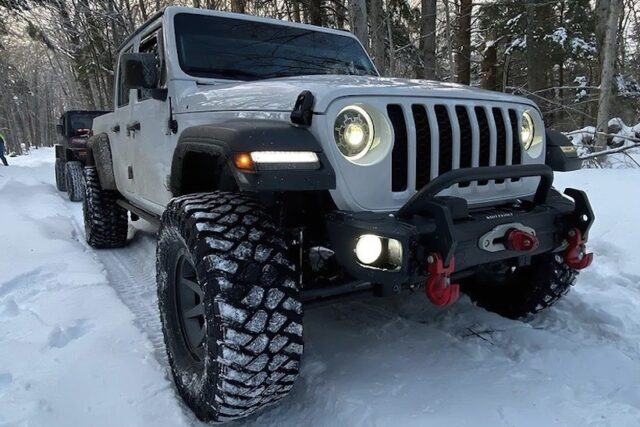Off-road Lights are often-misunderstood subject. Some add whatever lights look cool to their rig or try to emulate the hottest trends on social media. Others may mimic off-road racers using a massive amount of lumens with multiple light bars piercing the night. While that might dramatically increase light output, it usually results in sub-par lighting patterns, blinding hot spots and even a waste of money.
Technically, any additional amount of light can help navigate a dark off-road trail, as your Jeep’s factory headlights aren’t going to cut it on their own. But, there is the right way to do it that delivers better results. With the proper illumination, night runs with your Jeep become more enjoyable and less stressful as you can better see where you are going and what obstacles are in your path. And it may even save money, as the right combination of quality lights almost always outperforms loading up with low-performance or mis-placed options. Let’s look at how to properly add additional lighting to your Jeep for maximum performance.
Know Your Beam Patterns
The key to off-road lights is creating a wide and evenly dispersed field of light. Ideally, you want at least a 180-degree spread of light in front of your Jeep without blind spots or glare caused by overlap. One of the keys to doing this correctly is understanding the importance of beam patterns and which ones meet your needs. Multiple lighting companies use different terms to describe their beam patterns. Adding to the confusion is that some high-end lights can produce multiple beam patterns based on vehicle speed. But for the most part, beam patterns can be grouped into the following categories:
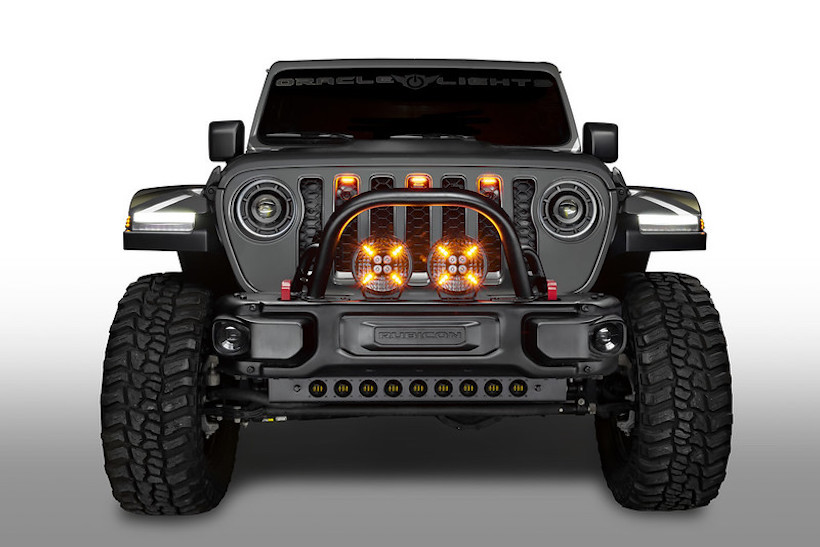
- Fog/SAE: Fog lights should have a very specific pattern with a sharp cutoff and need to be mounted low on a vehicle. The idea is to get “under” the fog and illuminate the road directly in front of your Jeep without causing glare from light reflecting backward off fog or snow. SAE-compliant fog lights can be used on the street, but not all fog lights carry this compliance.
- Flood/Work/Scene/Wide: The function of these lights is to produce the widest beam pattern possible. They don’t throw light far, but rather “flood” the area directly in front of the light. As their names suggest, they are ideal for work lights, reverse lights, or anywhere else close-up and dispersed illumination is needed.
- Cornering: A few companies still offer cornering lights that sit between flood and combo/driving patterns. They produce slightly narrower beams than flood lights but throw light further. Cornering lights have somewhat fallen out of favor as combo/driving lights can perform the same function but are more versatile.
- Combo/Driving: Combination or driving lights create a beam pattern projecting light further in the center and flooding the sides with light. They don’t have the distance of a dedicated spot beam or the dispersion of a flood, but attempt to combine the best of both patterns into one. Most lights that don’t mention a beam pattern are combination/driving lights as they are great general-purpose options.
- Spot: The sole function of the spot pattern is to project light as far as possible. To achieve maximum distance, reflectors must be very focused, creating a narrow beam of light. They are only suitable for high-speed travel at night.
Your Rig Is Not a Trophy Truck
Now that we know all about beam patterns, it is important to note that your Jeep is not a Trophy Truck. Even if you have put a lot of money into your Jeep’s suspension, it is unlikely you will be tackling rough terrain at triple-digit speeds.
For most of us, then, that means thinking realistically about the terrains and speeds you travel off-road as it affects what beam patterns to select. Spot-beam lights, for example, are primarily suitable for those going for an overall Baja 1000 win. Those traversing slower technical trails in low range will be fine with flood-pattern lights illuminating the immediate vicinity. Most of us sit between the two extremes, wanting a light setup that handles various speeds.
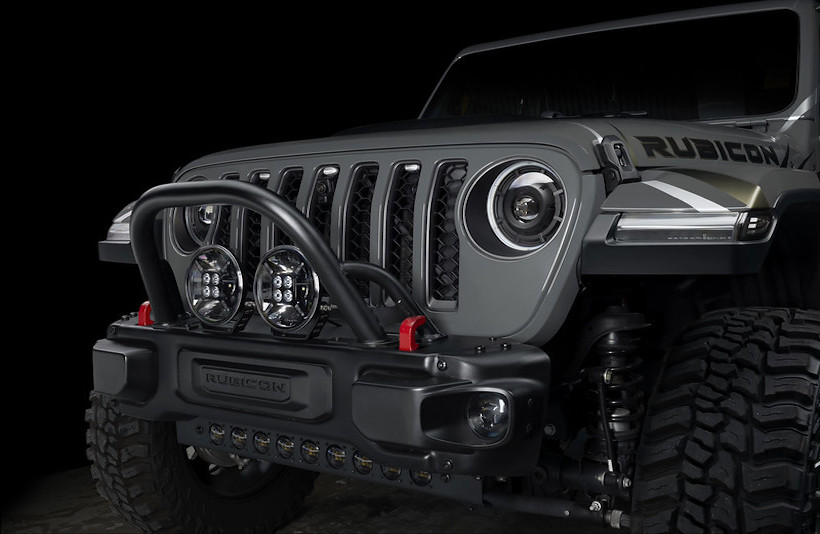
Starting the Journey of Illumination
One of the most obvious places to improve your Jeep’s lighting is often the most overlooked. Unless you opted for factory LED lighting, the headlights on your Jeep Wrangler are under powered and not built to deliver effective off-road illumination. The JL and Gladiator have slightly better 9-inch diameter halogen headlights with LEDs as an option, but the JK’s 7-inch headlights are notorious for their lack of output. Bumping around off-road at night with either setup is an exercise in frustration.
Thankfully, there are plenty of aftermarket LED headlight upgrade options to rid yourself of the stockers. And you don’t have to spend a ton of money as anything will be a serious upgrade over the dim factory ones. These Oracle LED headlights for the Jeep JL and Gladiator don’t break the bank and produce 5,200 lumens of high-quality illumination. They are also heated, making them ideal for use in snow country. Oracle also has multiple LED headlight options for the Jeep JK as well.
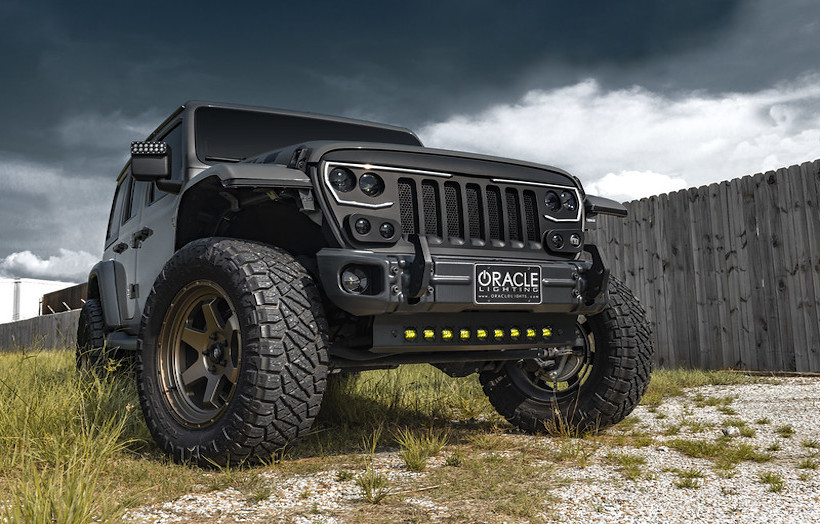
Let There Be Light
With your headlights now upgraded to modern technology, it is time to add additional off-road lights for a setup that will work in most situations. Remember, we want to create a wide field of light with enough throw in the center for realistic speeds. The best way to achieve this is with a mixture of different beam patterns and lights.
Start with a combination beam “main” light. Mounting options on the Jeep Wrangler and Gladiator can be limited, especially if running stubby aftermarket bumpers. One combination pattern LED light bar will fit across the top of the windshield or two high-quality LED lights on the front bumper if there is room. We would add two additional lights in either a wide or cornering beam pattern to support the main light and fill in the peripherals. Replacing the factory fog lights (if you have retained them) with upgraded LED units is also an option. Remember, a fog light pattern will illuminate the area directly in front of the Jeep, but options exist that fit the factory fog light locations with wider beam patterns to create a broader spread of light. Ditch lights also make sense for even more fill.
Ditch Lights: Not Just for Overlanders
Ditch lights have become popular among overlanders, but unlike some questionable overlanding trends, they are actually useful. Many make the mistake of aiming ditch lights directly forward and using the wrong beam pattern. To complete our setup and create a 180-degree (or beyond) light arc, a wide or flood beam pattern light should be used for ditch lights to illuminate the area directly next to your Jeep. And those lights should be aimed to the side and not directly forward. Running them at almost a 90-degree angle to the vehicle is not unheard of, but make sure there are no dark spots when aiming them. You want to use ditch lights to widen and complete your arc of light, not for forward illumination.
If you don’t like the looks of ditch lights or want to try something different, Oracle’s Off-Road Lights Side Mirrors for the Jeep JK and JL and Gladiator are unique options. They integrate 24 LEDs into the front of the side mirrors, producing 2,250 lumens. Each unit also uses a 45-degree beam angle to push light out to the periphery helping to create a wide arc of light. They offer clean looks and don’t produce the wind noise that ditch lights sometimes can.
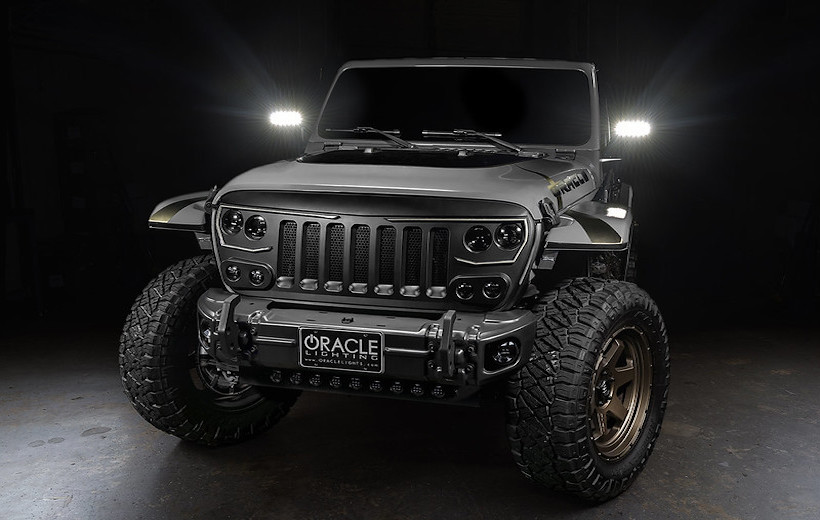
Rock Lights Rock
Tire placement and line choice are critical in slow-speed technical terrain. But even with the above setup, seeing what is directly around your tires can be difficult. A quality set of rock lights can make the difference between skewering your Jeep on a rock or gracefully crawling over it. Compact units, like these Oracle Colorshift Underbody LED Rock Lights, are easy to mount in a Jeep’s wheel wells. They provide a super-wide 270-degree beam pattern surrounding your tires with a pool of light making precision placement easy.
Rock lights also are useful outside of low-range crawling. Positioned in a wheel well, they are ideal for illuminating nighttime trailside repairs like a broken axle. Changing a flat tire is also easier with the extra lumens they provide. Sticking a rock light under the hood is perfect for brightening dark engine bays, and they can even be used to provide additional interior lighting. Rock lights rock and their small size make them useful in many applications.
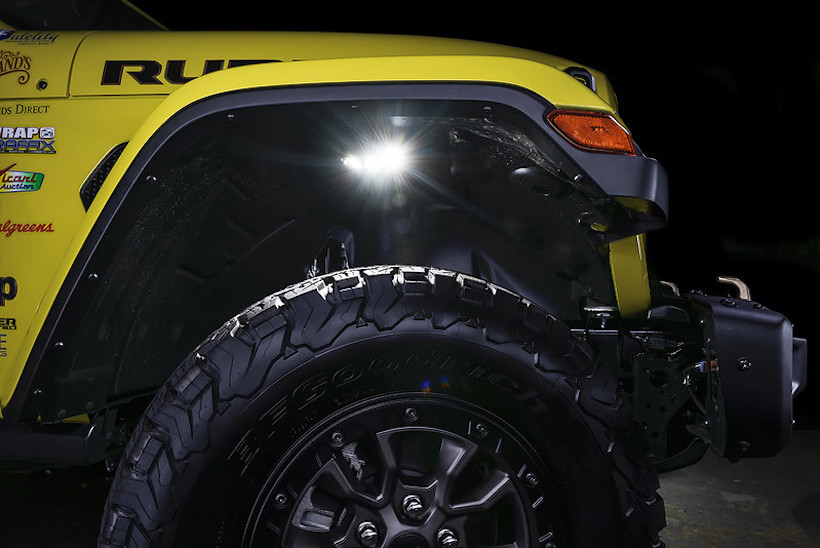
Thinking Outside the Arc
Most of the focus of this article has been on creating a broad and balanced spread of light in front of your Jeep from your off-road lights. But there are other lighting considerations when venturing into the off-road darkness. Eventually, you will have to reverse out of a sticky situation, and Jeeps, like most vehicles, have little rearward illumination. Adding a couple of small reverse lights will help immensely. We also always keep a hiking headlamp in our center console or hanging from the review mirror. They work better than flashlights because they keep our hands free while recovering or repairing a vehicle.
Without the proper lighting setup, nighttime wheeling can be sketchy and stressful. But following our lighting tips will ensure that you will want to keep exploring even after the sun goes down. So, add the right lights, invite some friends and get ready for some epic night runs.
Oracle Lighting – LEARN MORE HERE
___________________________________________________________________
The above article is a Sponsored Post – TAP does not receive a commission on any sales made from this article.







